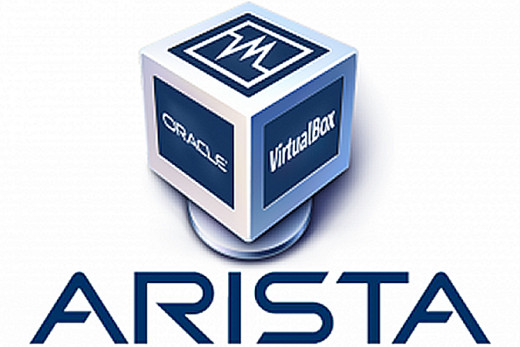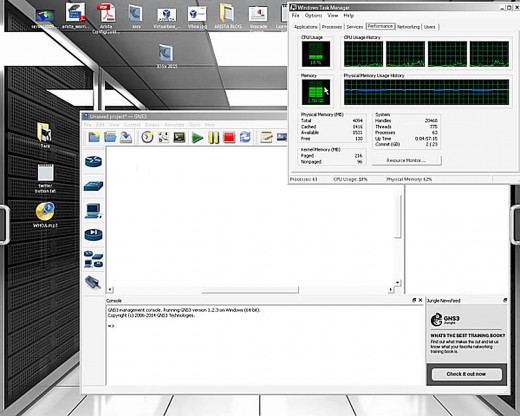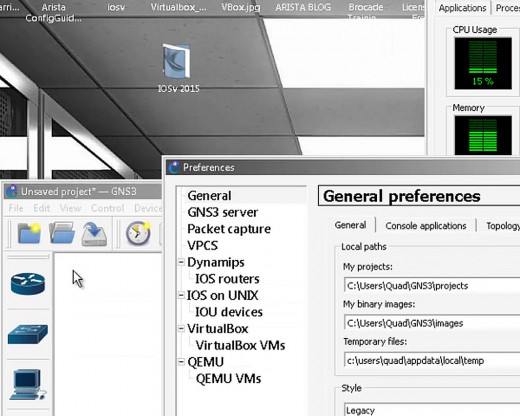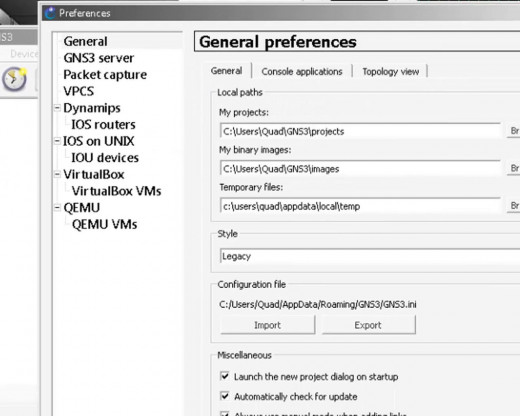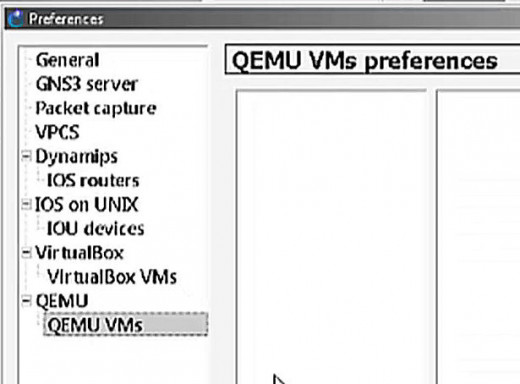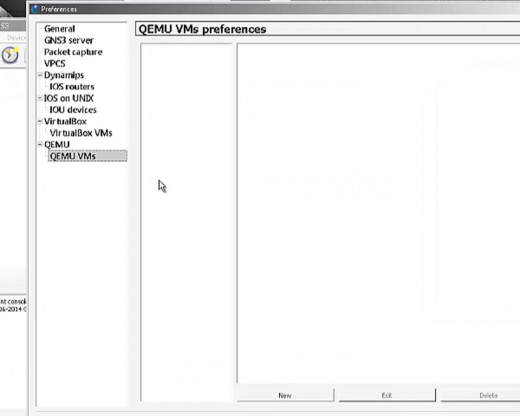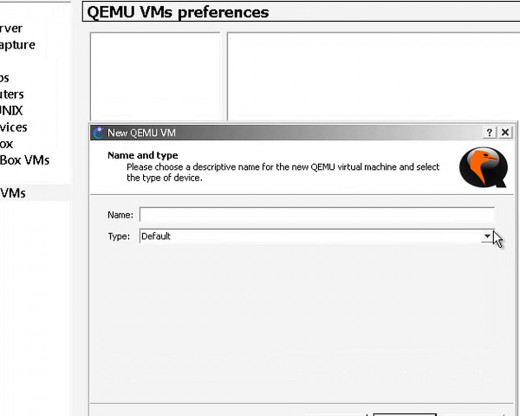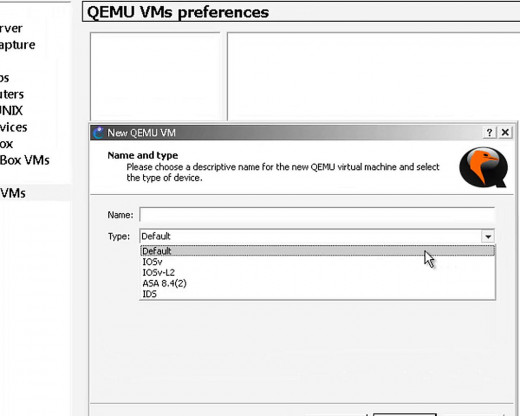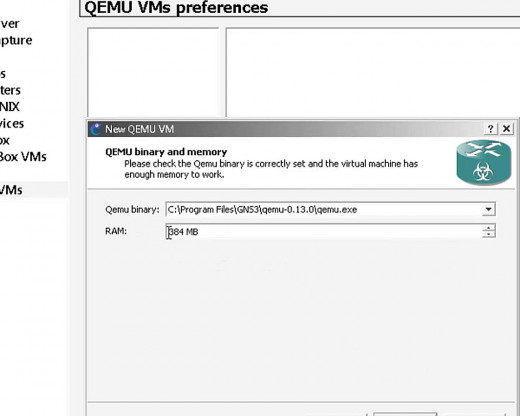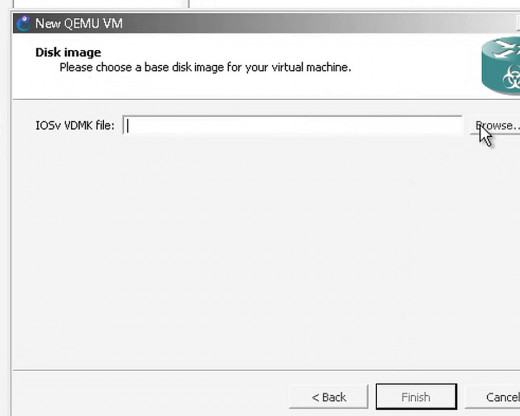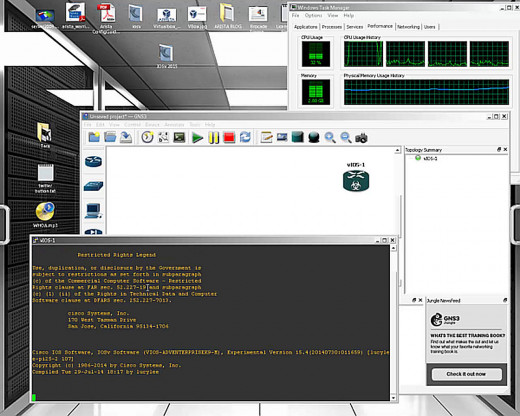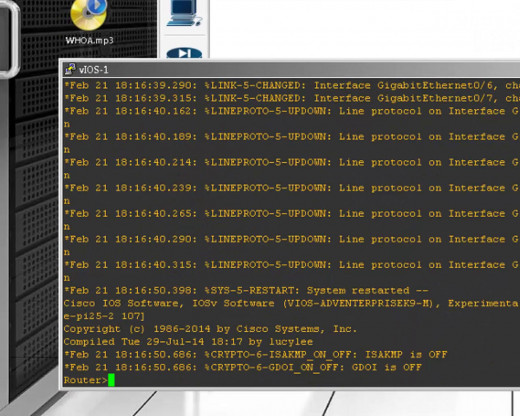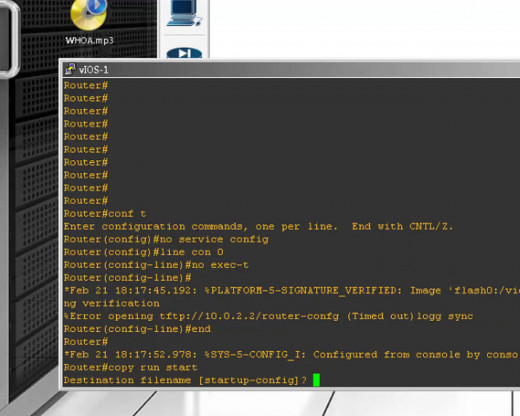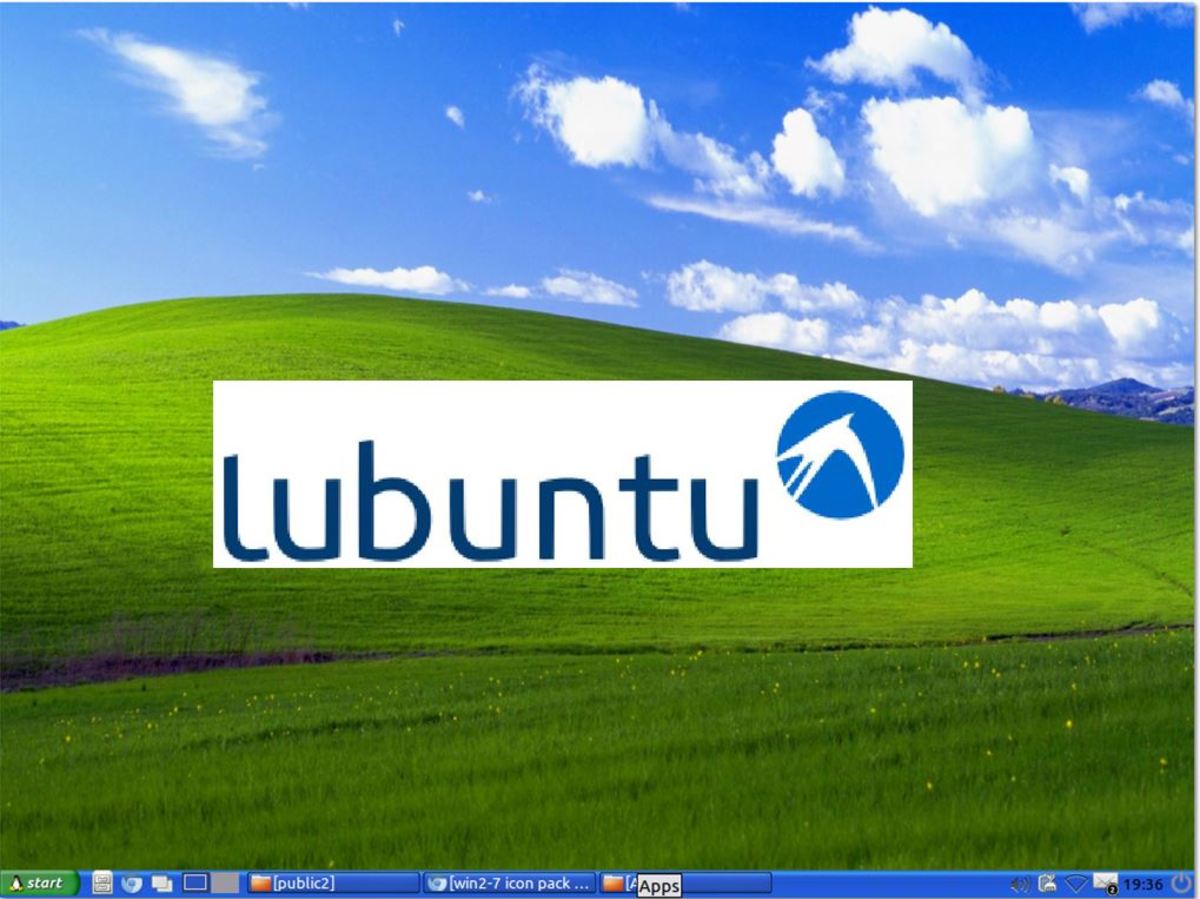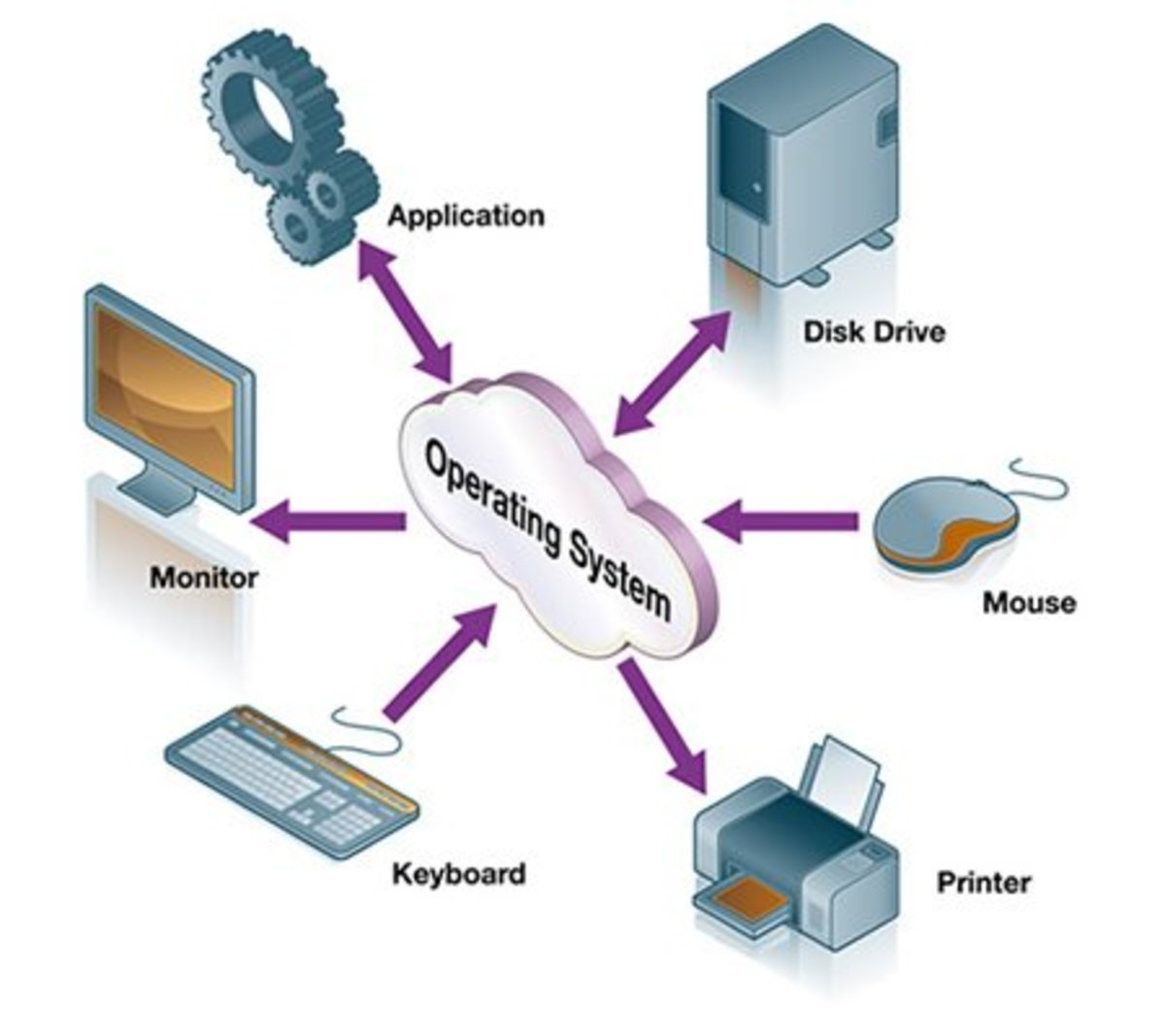GNS3 and vmWare IOSv part3: configuring IOSv virtual machines

Now we'll configure GNS3 to run IOSv
First thing you may want to do is start your task manager, and open up the "Performance" tab. You'll want to monitor CPU and Memory activity during this configuration.
Once IOSv is configured, and up-and-running, it really doesn't take much for resources. At first it absolutely hammers, one core of your CPU, then it settles down very peacefully... almost as IF nothing is running at all. And it's memory footprint is only 384megs... so, theoretically, you could run quite a few of these VM's on an average machine with 4 gigs of ram.
But I suggest you do not EVER start all your machines at the same time. QEMU will probably crash. You can start one router at a time, let it settle down... and then start your configuration exercises.
Before beginning configuration, start task manager.
Click thumbnail to view full-size





After you start GNS3, click on "Edit"...
Then, select "PREFERENCES". (which opens the "general preferences" page). And once inside, you will select QEMU and QEMU-VM's. Which will open into a rather blank-looking page if it's a new installation of GNS3. It's "blank" because there are no virtual machines inside it.
Once you're through with this introduction- it's very possible you'll go VM-wild and populate that thing to the maximum that your pc will run successfully.
Yes, GNS3 is very cool.
Under Preferences QEMU-VMs - browse to find the IOSv image
Remember how you extracted the IOSv virtual-disk image, from one-PK? Well, hopefully you stored that image in a couple of places. Just as insurance against "losing" the image, accidentally deleting it... or sometimes a file just gets corrupted and unusable for no particular reason. YOU WILL WANT A COPY OF IT STORED SOMEWHERE. So back it up. This is one of the best-newest IOS-images you can have to work with for training or infrastructure simulations.
But for now, browse to your "working directory" where you've got that image stored, and "find" it for QEMU.
Select the "name" of the VM from the drop-down
Click thumbnail to view full-size




You will browse for the virtual disk image, and when you find it and select it. GNS3 will ask you if you want to "copy it to the directory" for GNS3 images...
Say YES.
When you get to THIS point... you are finished with QEMU
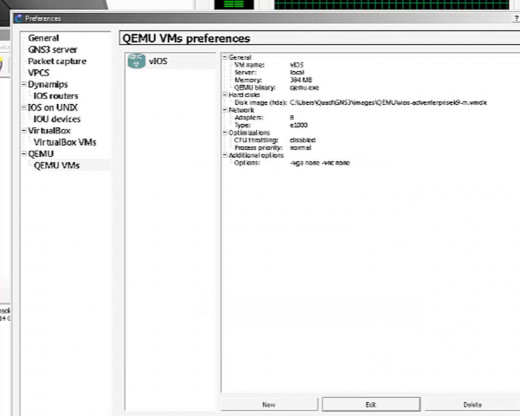
Forward to the LAST HALF of this video, for the GNS3 part
Now if you look under the "ROUTERS" section within GNS3, you will find that you see a new router listed there with an odd symbol of the "Viral" type. It's your new vIOS-Router.
Cisco "VIRL" is the "Cisco virtual internet routing lab"... and while this image isn't exactly the entire kit-n-kaboodle that Cisco had originally intended as "The Lab" environment. It's part of it. It's the fundamental technology that such lab activity is revolving around. it's just part of the "whole spectrum" of virtual components being released all over the place by all the main vendors, as part of the testing and training environment this engineering technology is based upon.
This vIOS-image was part of the developers kit, that programmers would use in network simulations (for testing network applications).
Infrastructure guys can run it like a router. Because it IS a router.

This is Cisco's official page for VIRL
- Get VIRL | VIRL
CISCO VIRL - Introducing The Next Generation Network Simulation System... We all have our own lab full of high-end routing equipment ready and waiting for when we need it.

Keep an eye on "PERFORMANCE" in Task-Manager
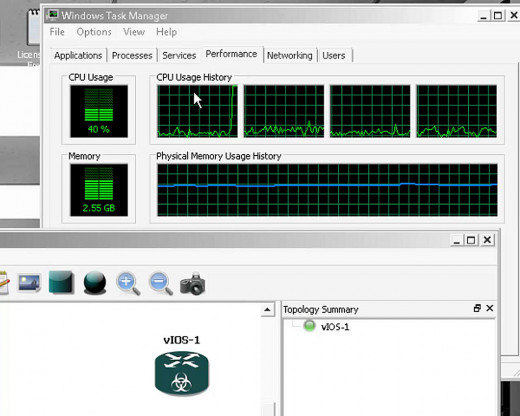
When you start the vIOS router in GNS3 it will tend to "max-out" one of your cores. So, give it time to finish running through it's startup routines.
Just be patient.
And especially if you are starting two of the routers at the same time. In fact, i don't really recommend that. I've tried starting multiple vIOS routers at the same time. Sometimes QEMU will choke and just quit running... And you can't run virtual machines without QEMU.
You CAN however, run multiple vIOS routers if you are PATIENT, and just let them start in their own good time. Once an individual router is started... start the next one. Then the next.
Once these routers are up and running they don't use too much by way of compute-cycles. They seem like they are barely "there" once they've settled down. So you SHOULD be able to network several of them for CCNA or CCNP training labs.
I think you can run 10 vIOS routers easily.
I've managed to start two vIOS routers and two Arista switches, using 4 gigs of ram... And the Arista switches require 1024 megs of ram each. Actually, Arista switches want MORE than that... but... it looks like you CAN run a "decent" little config with just 4 gigs of ram. But more on Arista, later...
So, when you throw in the mix of basic, standard IOS-Routers (in GNS3), and couple non-descript pseudo-switches... you're FINE... when it comes to simulation.





That's it- you're ALL SET - you can work with vIOS now in GNS3

Now, we need Arista Switches in GNS3
